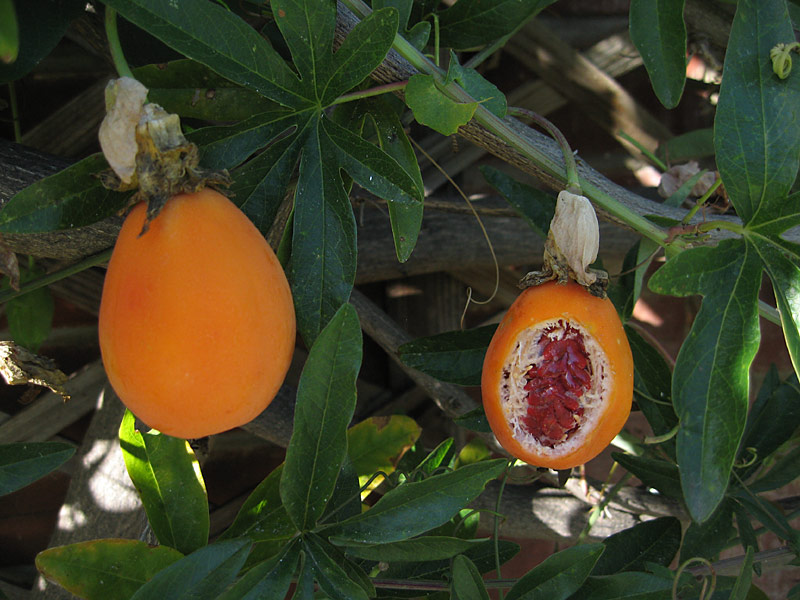My country made harmala illegal years ago and as of a few months ago banned Syrian Rue for import. Leaving B. Caapi as the only viable source of Harmala alkaloids. As many live in colder climates B. Caapi isn't the easiest to grow and Syrian Rue itself can be very fussy to grow. This left me reading articles on passiflora as a possible alternative.
According to the study listed below Passiflora Incarnata vs Passiflora Caerulea, harmine was extracted. Passiflora Incarnata yielded .0057mg/g and .013mg/g in the 2 samples making it a poor choice for harmine. However, Passiflora Caerulea produced roughly 10 times the amount at .102% still a poor choice for an extraction. These results were from the flowers and leaf of the vine. This got me thinking as I remember reading somewhere the fruit can contain 4 times the amount of alkaloids in passiflora.
I did a preliminary extraction. I dried 10g of Passiflora Caerulea seeds (the red fruit was also included) and 30g of the outer fruit 'husk' I conducted two extractions using the EA harmala approach. the husks did produce what appeared to be harmala citrate but i decided not to base it and ultimately abandoned it as it appeared at a lower concentration than the seeds produced. The seed extraction was based, filtered and weighed producing .25% of what should be harmine. (Being a small batch, there appeared to be some loss via filtering).
I then conducted a 90g dried seed run (this time washing the red fruit away with a finely grated metal sift (the seeds surfaced was scratched and washed away as well). The idea was to get more dried seeds than fruit in the hope the seeds contained more harmine than the fruit (i was hoping for .5%+). This extraction yielded .25%.
Concluding perhaps the fruit contains a bit of harmine (or possible the seeds surface). If it had yielded .5% I would have considered sending it off for lab analysis .
However, I believe the roots still may be worth doing an extraction on, which I hope to do next.
So is Passiflora Caerulea a viable source for harmine? [Edit: NO it is not]
I would say possibly if one was desperate and couldn't access B caapi or Syrian Rue. 100g of seeds should get you 1 pharmahusca trip. Whether it is entirely harmine is up for debate without a LC MS test. The EA harmala approach has proven to be very selective with harmine/ harmaline when using Syrian rue and one would assume it should be for passiflora as well.
This however, does leave the door open to other varieties of Passiflora. Or the possibility of selective breeding.
Note: Seeds where harvested in late Summer.
In addition, it would appear the seeds contain double the alkaloids than what the leaf and flowers do (when compared to the study).
Passiflora Incarnata vs Passiflora Caerulea
https://www.researchgate...ee_Species_of_PassifloraHigh speed analysis of harmala alks from passiflora PPM.
https://www.tandfonline....1076/phbi.41.2.100.14244Additional information.
In the highspeed analysis study, although PPM don't equate to mg per gram, it does give a good indication of what other varieties maybe viable. Laurifolia L. appear to come out ontop and produced 146 times more (PPM) detection than Passiflora Caerulea for harmine. Meaning it may have a good percentage of harmine in it. However, Laurifolia is a tropical variety.

Edit: It appears another 50mg+ crashed out of the sodium carbonate water. Either it slipped through the filter or took longer to crash. LC MS to follow.
Disclaimer: All my posts are of total fiction.